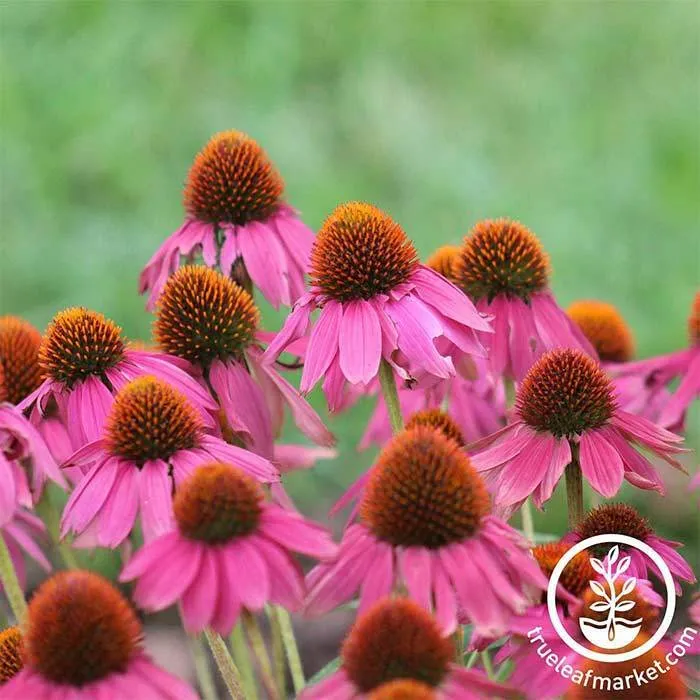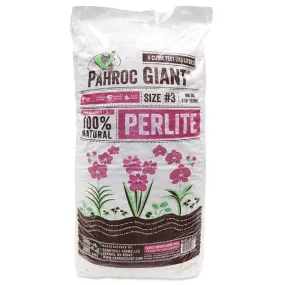70 – 84 days. Magnus echinacea seeds grow one of summer's most unique and exciting blooms, elegant yet hardy 24 – 36” tall bushy shrubs branched in 4” rosy pink heads. Award-winning Magnus echinacea promises an eye-catching substitute to the more traditional daisy, dahlia, or black-eyed susan. Magnus echinacea is a Perennial Plant Association Plant of the Year for its huge orange-spiked cone center and tolerance to a variety of poor conditions. Magnus echinacea seeds are an ideal grow for patio or indoor planters, yet still a vigorous garden performer promising season-long brilliance up until the frost. 1000 seeds.
Growing Magnus Echinacea Garden Seeds
- Taxonomy: Echinacea purpurea
- Other Names: Purple Coneflower, Eastern Purple Coneflower, Hedgehog Coneflower
- Seed Type: Perennial
- Sow Indoors or Outdoors: Magnus echinacea seeds can be sown directly after the frost but, for earliest spring blooming, begin indoors 6 – 8 weeks prior. Echinacea seeds will germinate between 7 – 21 days with full light and harden off if transplanting outside or to an indoor planter with full sun. Plants are known to easily reseed itself.
- Days to Maturity: 70 – 84 days
- Hardiness Zone: 3 – 8
- Planting Depth: Plant 2 – 3 seeds ¼” deep
- Plant Spacing: 24”
- Growth Habit: 24 – 36” tall bushy shrub with an 18 – 24” wide spread of branching 4 – 5” blooms
- Soil Preference: Average, loamy, well-drained
- Light Preference: Full sun
- Diseases/Pests/Troubleshooting: Magnus echinacea is an adaptable plant known to be tolerant of drought, heat, humidity, and poor soils. Do not overwater echinacea since plants are occasionally susceptible to leaf spots caused by bacteria and fungi in over-saturated soil. Magnus echinacea has no serious pests but monitor regularly for Japanese beetles.
- Color: Bright rosy pink petals and an orange-spiked cone center
Magnus echinacea seeds can be sown directly after the frost but, for earliest spring blooming, begin indoors 6 – 8 weeks prior. Echinacea seeds will germinate between 7 – 21 days with full light and harden off if transplanting outside or to an indoor planter with full sun. Plant 2 – 3 Magnus echinacea seeds ¼” deep and 24” apart in average, loamy, and well-drained soil in full sun. Magnus echinacea is an adaptable plant known to be tolerant of drought, heat, humidity, and poor soils. Do not overwater echinacea since plants are occasionally susceptible to leaf spots caused by bacteria and fungi in over-saturated soil. Magnus echinacea has no serious pests but monitor regularly for Japanese beetles. Magnus seeds mature in 70 – 84 days as 24 – 36” tall bushy shrubs with an 18 – 24” wide spread of well-branched 4 – 5” rosy pink blooms.
Echinacea purpurea is native to the Ozark Mountain region and found all throughout the Mississippi and Ohio Valleys. Native Americans were the first to use echinacea to treat burns, wounds, toothaches, and several other internal applications. Presently, echinacea is most commonly brewed as a tea to treat cold symptoms and synthesized echinacea is widespread in the pharmaceutical industry to bolster weak immune systems. Magnus echinacea debuted as the 1998 Perennial Plant Association’s Plant of the Year.















